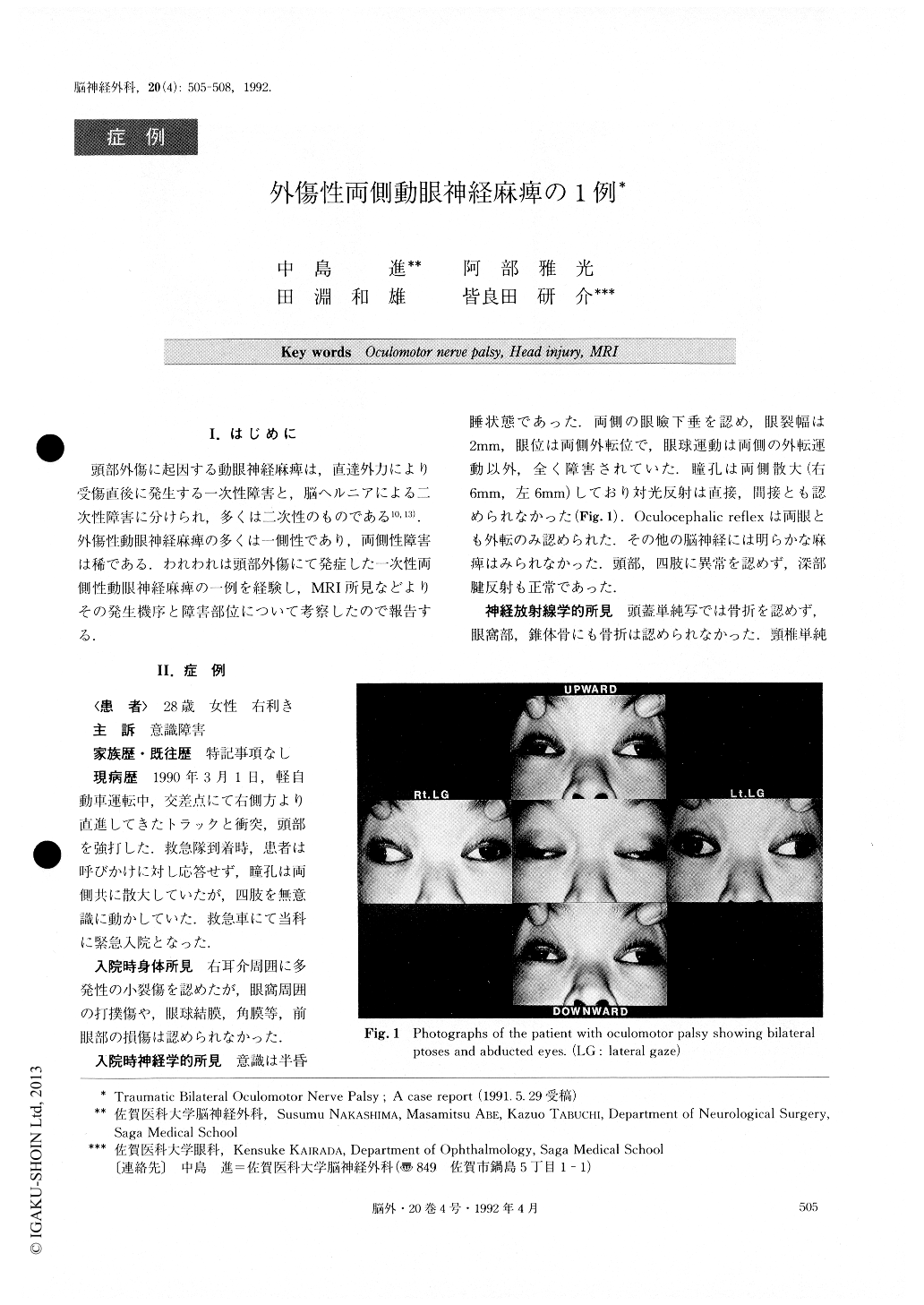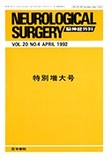Japanese
English
- 有料閲覧
- Abstract 文献概要
- 1ページ目 Look Inside
I.はじめに
頭部外傷に起因する動眼神経麻痺は,直達外力により受傷直後に発生する一次性障害と,脳ヘルニアによる二次性障害に分けられ,多くは二次性のものである10,13).外傷性動眼神経麻痺の多くは一側性であり,両側性障害は稀である.われわれは頭部外傷にて発症した一次性両側性動眼神経麻痺の一例を経験し,MRI所見などよりその発生機序と障害部位について考察したので報告する.
A 28-year-old woman, with no past medical history, was admitted soon after a motor vehicle accident on March 1, 1990. On admission there were multiple small wounds in the right temporal region, but no wounds around the orbits. She was semicomatose with bilateral-ly fixed dilated pupils (6mm) and ptoses. The eyes were abducted bilaterally. No other cranial nerve palsy was noted. She moved four limbs spontaneously. No skull fracture was present on X-ray films. Cervical X-ray films revealed straightened cervical vertebral col-umn but no fracture. Pelvic bone X-ray films demon-strated fracture and diastasis of the pubic bone. A com-puted tomography scan demonstrated a small subdural or subarachnoid hemorrhage in the right ambient cis-tern. A magnetic resonance imaging (MRI) carried out 12 days after trauma demonstrated bilateral small sub-dural hematomas under the cerebellar tentorium and contusional lesions of the bilateral medial temporal lobes. There were no abnormalities present in the brain stem. The patient was treated conservatively with diuretics and steroids. Disturbance of consciousness gradually improved until one month after the trauma, when she came close to being alert. Bilateral ptoses cleared after 3 months, and adduction of the eyes reco-vered after 6 months. Vertical eye movement improved a little in 6 months. Fixed 6mm pupils changed to fixed 4mm pupils in 6 months.
Bilateral traumatic oculomotor palsy is a rarely de-scribed condition, and its mechanism remains conjectu-ral. We discussed the mechanism of the injury and the site of the lesion. In cases of oculomotor nerve palsy without a direct trauma to the orbital content, the le-sion responsible for isolated third nerve palsy should be situated behind the cavernous sinus. MRI of our case disclosed injury around the tentorium, which may have been associated with displacement of the brain around the tentorium. With a displacement of the brain, the grater damage of the oculomotor nerve should occur at sites of fixation; between posterior cerebral and super-ior cerebellar arteries, at the free edge of the reflected leaf of the tentorium, at its dural attachments on enter-ing the cavernous sinus. The recovery of oculomotor nerve palsy is variable. It probably depends on an ana-tomic lesion which can not be located exactly through the ophthalmologic findings.

Copyright © 1992, Igaku-Shoin Ltd. All rights reserved.


